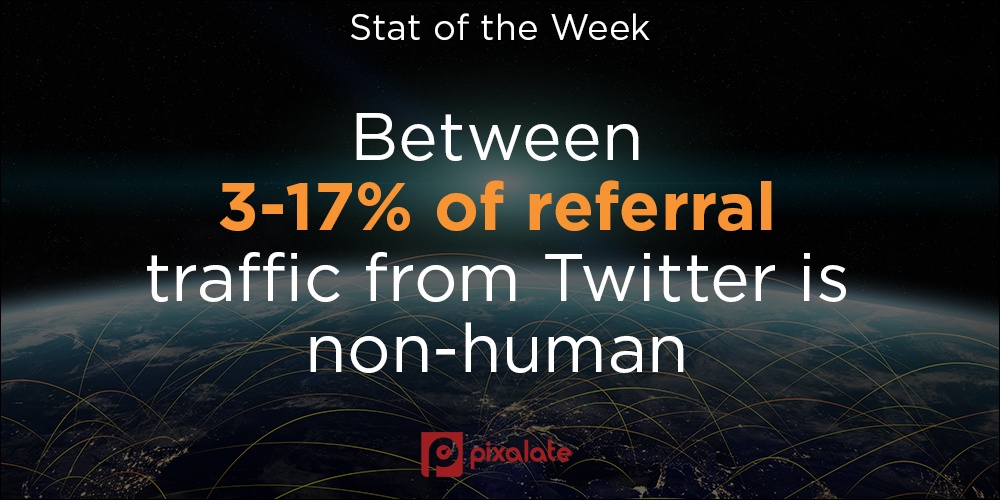
This week's review of ad fraud and quality in the digital advertising space.
Click the Stat of the Week for more information.
Pixalate this week received accreditation from the Media Rating Council (MRC) for Sophisticated Invalid Traffic (SIVT) detection and filtration for desktop and mobile web impressions. MediaPost has the full story. "In addition, the fraud protection provider said it has been granted continued MRC accreditation for desktop display viewability measurement," MediaPost wrote.
Advertising Age reports that some brands are concerned that Twitter is underestimating its bot problem. The article features insights from Pixalate. "Pixalate, an outside measurement firm, said that Twitter has a bigger bot problem than its rivals. Twitter bots accounted for 3% to 17% of traffic coming from Twitter to outside websites measured by Pixalate in June," the article read. "Meanwhile, Facebook saw up to 3% of its traffic coming from bots, Instagram saw 4% and Pinterest saw between 2% and 9%, according to Pixalate's analysis [from] June."
According to Fortune, a new type of malware, dubbed "CopyCat," infected 14 million Google Android devices "and raked in more than a million dollars through fraudulent advertising and app installations." The article added: "The malware operation, which peaked during April and May 2016, spread to as many as 14 million phones and tablets and garnered as much as $1.5 million in the space of those two months."
Digiday has reported that magazine publisher Dennis "wants to improve the transparency of digital ad trading, and it believes blockchain technology could hold the answer." Dennis — in coordination with the Guardian, Financial Times, CNN International, Reuters, and Mansueto — is working to create an SSP prototype using blockchain. Pixalate previously noted that while blockchain technology could very well improve transparency in programmatic, ad fraud issues would remain.
Programmatic has been plagued by "click fraud, brand safety, data privacy, [and] viewability," writes Econsultancy, recapping a presentation given by Hari Shankar, MD at Havas Group's Escelis. Shankar concluded that a transparent programmatic buying model must be set up in order to solve the issues.
Sign up for our blog to stay updated with new stats, trends, and analysis on digital ad fraud.
*By entering your email address and clicking Subscribe, you are agreeing to our Terms of Use and Privacy Policy.
These Stories on Weekly Recaps
*By entering your email address and clicking Subscribe, you are agreeing to our Terms of Use and Privacy Policy.

Disclaimer: The content of this page reflects Pixalate’s opinions with respect to the factors that Pixalate believes can be useful to the digital media industry. Any proprietary data shared is grounded in Pixalate’s proprietary technology and analytics, which Pixalate is continuously evaluating and updating. Any references to outside sources should not be construed as endorsements. Pixalate’s opinions are just that - opinion, not facts or guarantees.
Per the MRC, “'Fraud' is not intended to represent fraud as defined in various laws, statutes and ordinances or as conventionally used in U.S. Court or other legal proceedings, but rather a custom definition strictly for advertising measurement purposes. Also per the MRC, “‘Invalid Traffic’ is defined generally as traffic that does not meet certain ad serving quality or completeness criteria, or otherwise does not represent legitimate ad traffic that should be included in measurement counts. Among the reasons why ad traffic may be deemed invalid is it is a result of non-human traffic (spiders, bots, etc.), or activity designed to produce fraudulent traffic.”

